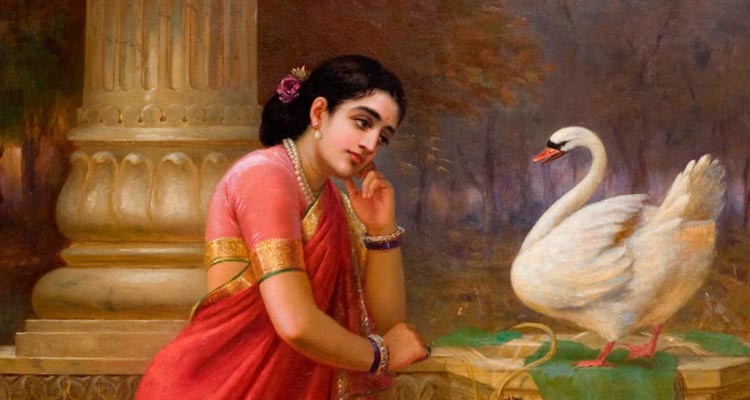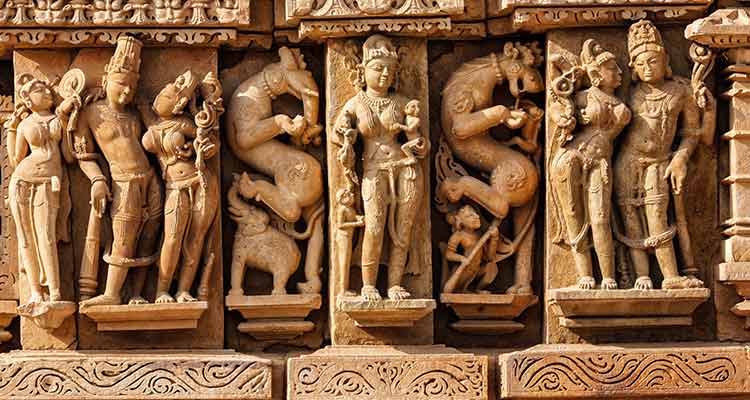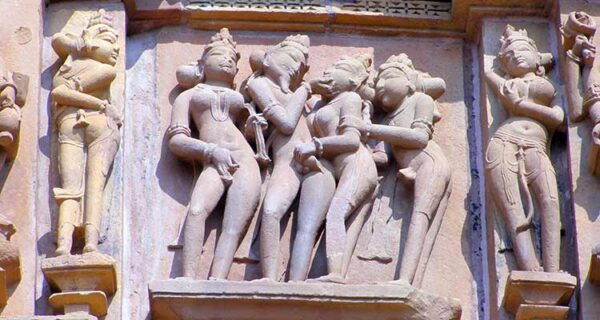Be it the Kalbelia form of dancing from Rajasthan or the carvings found in the ancient temples of India or the depiction of saree-clad Indian women in Ravi Varma’s oil paintings – they have something in common – all of them are sensuous, voluptuous, tactile, and yes – sacred. Ancient Indian heritage clearly indicates that the sensual is a part of the sacred. How does one achieve this, wonders Bonobology contributor Shail Gulhati?
Madhuri Maitra feels that “everything that occurs in human life is sacred because humans are the only creatures capable of transcending their sensual natures to achieve spiritual bliss. And it stands to reason that unless you recognise and explore your sensual nature, you can’t transcend it.” Sensual is a part of the sacred because the whole idea of devotion is based on the principle of pleasure.
A devotee finds pleasure in his devotion. Even austerities give pleasure. And the pleasures of the body, as well as the mind, are equally important because both have to go hand-in-hand in order to give satisfaction.

Amit Shankar Saha says, “In ancient times the body and the mind were two media to achieve a kind of transcendence in pleasure. All of our mythology – are myths of procreation and union of male and female including foreplay leading to coital.”
Ancient Indian heritage has always celebrated the female form as Shakti, despite women’s suppression in today’s patriarchal Indian society. A female form is indeed sensuous. In Indian mythology and ancient Hindu scriptures like the Vedas, women were created to be sensuous, as they were messengers of fertility. It is through them that new lives came to existence on this earth and hence their sensuousness was celebrated as a precursor to sex and birth. In the ancient concept of Shivling, the Linga or the penis is surrounded by the Yoni or uterus – we worship that Shivling as a symbol where all desires (ultimate being sexual pleasure) merge and give rise to dedication. Hence sensuous has always been sacred in India. However, sadly, “over the ages dominance of Brahmins and repeated invasions and plunder by foreign invaders forced Indian society to hide their women and their sensuousness behind closed doors,” believes Saheli Mitra.

Interestingly, the sensual was always part of life in ancient times. “However, depending on which side of the sex you were, the sacredness could be a transgression or a transcendence,” feels Utkarsh Patel. But the sexual act was always an important part of life, he agrees. Speaking of the depiction of sexual positions on the walls of ancient temples like Khajuraho, Dr Sanjeev Trivedi says that in ancient times when people became over-religious and started staying away from sex, the population started dwindling. The kings then built temples (like Khajuraho) to depict even gods and goddesses indulging in sensual pleasures, to spread the message that sex is healthy and required. One is free to feel that there is something sacred about the ‘sex education’ of ancient times.

Related reading: Sex, then and now
Carvings reveal state patronage during those times. But modern India seems to be repressed, as we do not find the depiction of sex in art permissible. “We cannot imagine a leader employing sculptors or painters or architects to construct sexually explicit images on the walls,” Devraj Kalsi sighs.
The link between sensual and sacred snapped long ago. Now sacred is purely sacred without any space for the sensual touch. We are happy keeping the two distinctly different and have zero tolerance for those trying to revive those times. We do not consider the depictions sacred, but the monuments are still part of our heritage.

Urmi brings out a completely different angle and says, “The sensual part of the sacred is an idea rooted in the Tantras. Tantra views the human body as a smaller version of the cosmos itself, pervaded by Shiva and Shakti. If God resides in it, it is sacrosanct.” Unlike the ascetic way, which sees the body as an impediment to spiritual progress, the Tantras viewed the body as a tool to achieve enlightenment. But it must be borne in mind that sensual/erotic pleasure that is so commonly associated with Tantra, is but a small part. The ultimate goal is to be able to transcend the endless cycle of desire. In the Tantric tradition, when one indulges the body sexually, one only sees it as the coming together of Shiva and Shakti and not a mere act of pleasure. It takes immense spiritual discipline to keep this view in mind, and slowly ascend to god consciousness. The body then ceases to be home to basic carnal instincts and becomes the abode of unsullied divine energy.
Ask Our Expert
You must be Logged in to ask a question.



Featured
19 Sure Signs Your Boyfriend Is Not Sexually Attracted To You
120 Juicy Questions To Ask Your Girlfriend
7 Reasons Showering Together Is Great For Intimacy And How To Do It Right
Beyond Pleasure: How Intimate Gadgets Foster Deeper Connections
21 Exotic Roleplay Ideas To Boost Naughtiness In Your Relationship
21 Kinky Foreplay Games To Turn Up The Heat
Unlocking Intimacy And Connection: The Transformative Power Of Sex Therapy
How To Clean A Vibrator? 9 Mistakes You Must Avoid
Financial Domination: What It Is, How It Works, And Can It Be Healthy?
How To Be A Better Lover – 11 Pro Tips By A Sex Therapist
Complete Theory On Neck Kissing | What Happens When You Kiss a Girl’s Neck
21 Common Sexting Codes And Meanings
Vanilla Relationship – Everything You Need To Know About
Why Twerking Is Directly Related To A Full Body Workout
10 Best Lingerie Pieces You Should Pack For Your Honeymoon
Erotic Things You Might Want To Say To Your Partner
Some women crave sex and not lemons during pregnancy
How To Have A Sex Chat With Your Man For The First Time
12 Lesser Known Erogenous Zones For Males
5 Things Men Can Do For Better Foreplay!